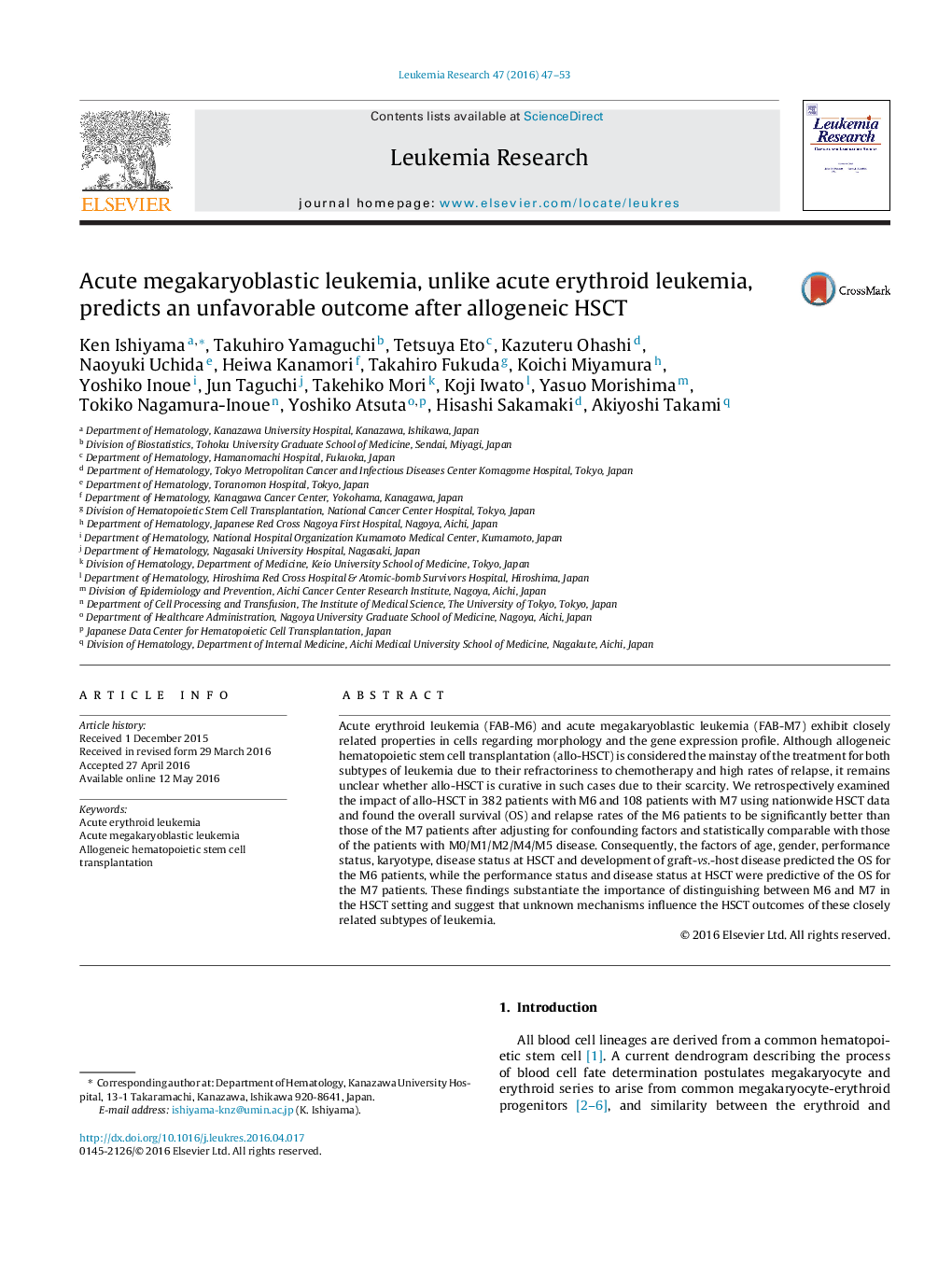| کد مقاله | کد نشریه | سال انتشار | مقاله انگلیسی | نسخه تمام متن |
|---|---|---|---|---|
| 2136423 | 1547901 | 2016 | 7 صفحه PDF | دانلود رایگان |

• M6 and M7 of acute myeloid leukemia are considered to be closely related in origin.
• We conducted a nationwide survey on outcomes of allo-HSCT in patients with M6 or M7.
• The overall survival of M6 patients was significantly better than that of M7.
• Unknown mechanisms influence the HSCT outcomes of these closely related subtypes.
Acute erythroid leukemia (FAB-M6) and acute megakaryoblastic leukemia (FAB-M7) exhibit closely related properties in cells regarding morphology and the gene expression profile. Although allogeneic hematopoietic stem cell transplantation (allo-HSCT) is considered the mainstay of the treatment for both subtypes of leukemia due to their refractoriness to chemotherapy and high rates of relapse, it remains unclear whether allo-HSCT is curative in such cases due to their scarcity. We retrospectively examined the impact of allo-HSCT in 382 patients with M6 and 108 patients with M7 using nationwide HSCT data and found the overall survival (OS) and relapse rates of the M6 patients to be significantly better than those of the M7 patients after adjusting for confounding factors and statistically comparable with those of the patients with M0/M1/M2/M4/M5 disease. Consequently, the factors of age, gender, performance status, karyotype, disease status at HSCT and development of graft-vs.-host disease predicted the OS for the M6 patients, while the performance status and disease status at HSCT were predictive of the OS for the M7 patients. These findings substantiate the importance of distinguishing between M6 and M7 in the HSCT setting and suggest that unknown mechanisms influence the HSCT outcomes of these closely related subtypes of leukemia.
Journal: Leukemia Research - Volume 47, August 2016, Pages 47–53